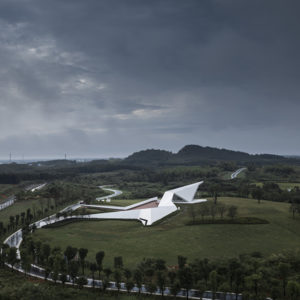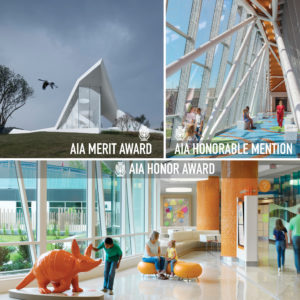The Art of Folded Concrete
Crane Nature Memorial Preserve, Crane Pavilion Wall
←
To Project Types
QIANNING, HUBEI PROVINCE, CHINA | 2,000 SF
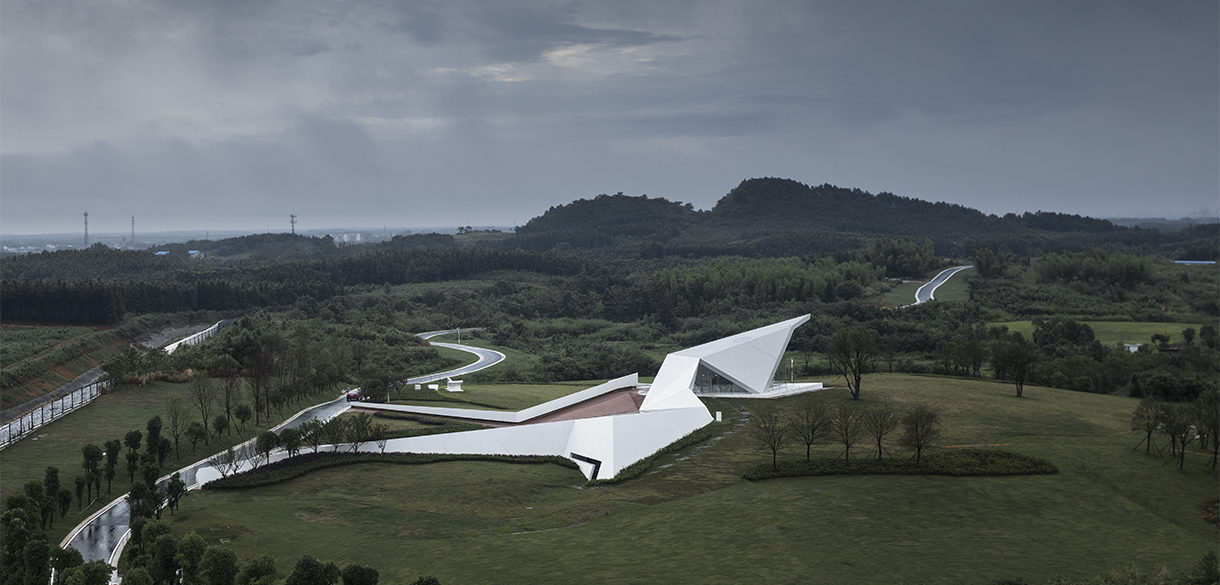 The pavilion overlooks the endangered crane preserve.
The pavilion overlooks the endangered crane preserve.
Overlooking a preserve inhabited by endangered, red-crowned cranes, the Crane Pavilion silently communicates with nature while carving out a space for its human inhabitants to mourn. Crucial to the aesthetic success of the pavilion, is its white, crisply-articulated, hand-polished concrete wall. The cast-in-place concrete wall created the exterior and interior surfaces in a single pour.
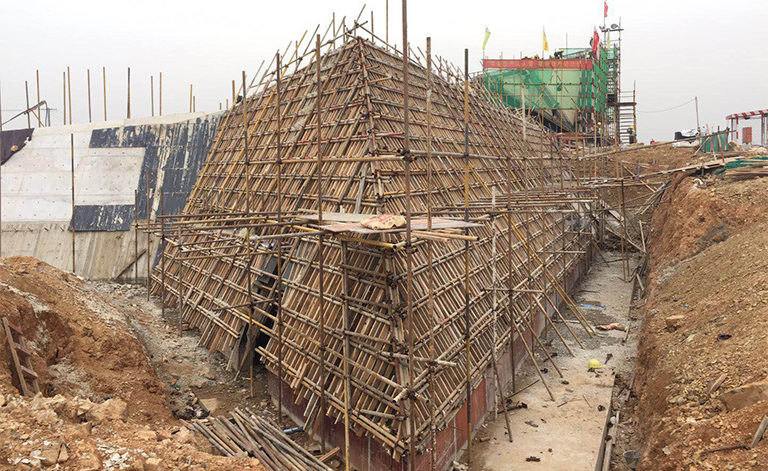 Precise formwork ensures that concrete ties are accurately placed.
Precise formwork ensures that concrete ties are accurately placed.
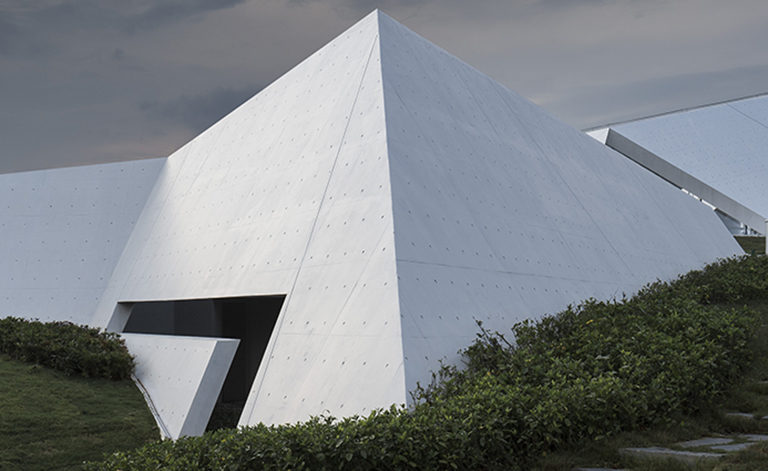 Crisply-articulated, hand-polished concrete wall
Crisply-articulated, hand-polished concrete wall
To ensure the desired effect, we constructed multiple large sample walls to test concrete mixes, calculating the transportation timing, and experimenting with best temperatures for pouring and curing.
Under any circumstance, this method would require precise formwork to ensure the concrete ties are accurately placed and the desired surface texture is produced. But it demanded an extra level of care to produce the angles and delicate creases of the pavilion design. This construction method also required all the ductwork, electrical conduits, and insulation to be in their exact locations when the pour was made, so there couldn’t be any mistakes.
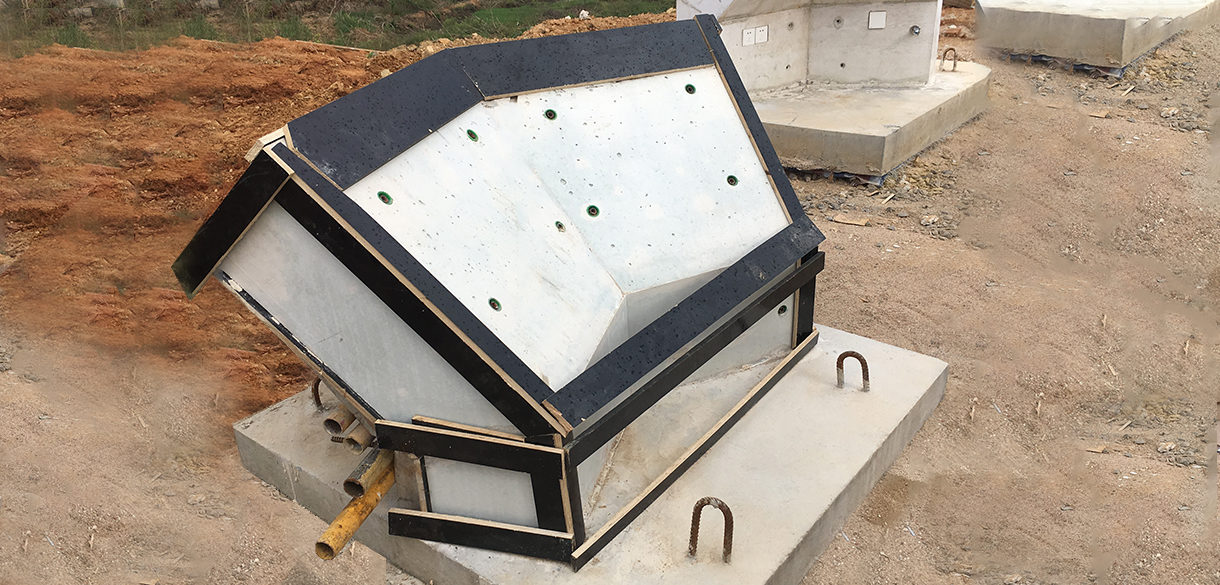 Full-scale mockups were crucial to the success of the project.
Full-scale mockups were crucial to the success of the project.
The wall’s construction was further complicated by the logistical difficulties involved in transporting the living concrete – a concrete that contains bacteria spores which, when exposed to water, begin a metabolic process that produces limestone, sealing itself against further water intrusion. Because the color and look of the concrete is affected by external temperatures at the time of the pour, we also had to make sure that each pour was made in the right conditions. To ensure the desired effect, we constructed multiple large sample walls to test concrete mixes, calculating the transportation timing, and experimenting with best temperatures for pouring and curing. These experiments allowed us to develop creative ways of using sanders and finishing coats to mitigate imperfections and achieve the desired aesthetic affect.
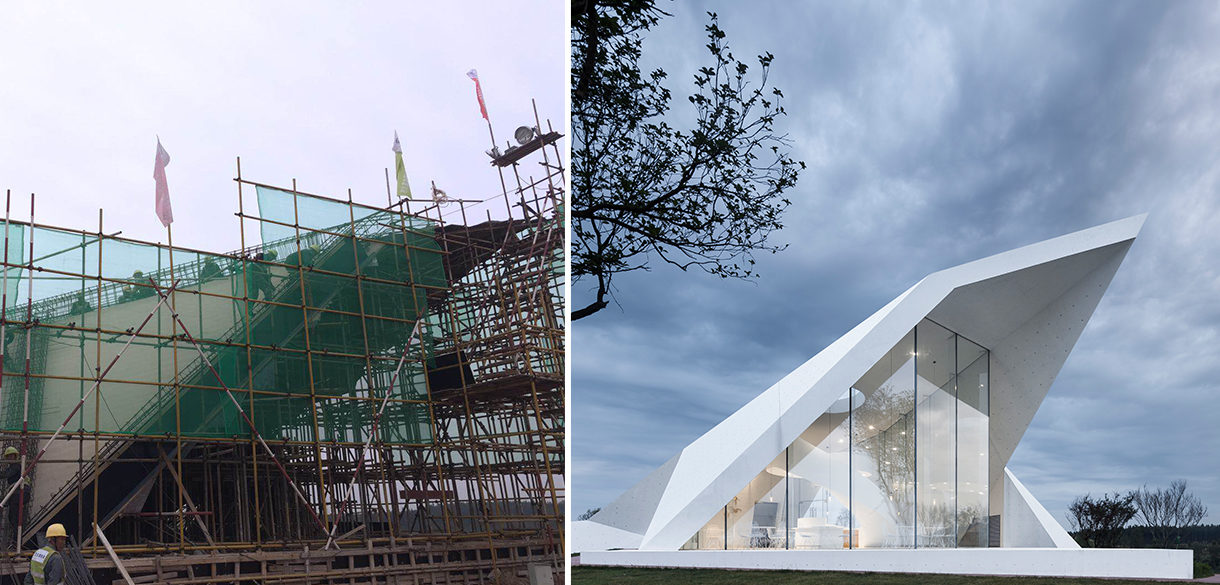 Transformation from concrete form to finished product
Transformation from concrete form to finished product
-
News




